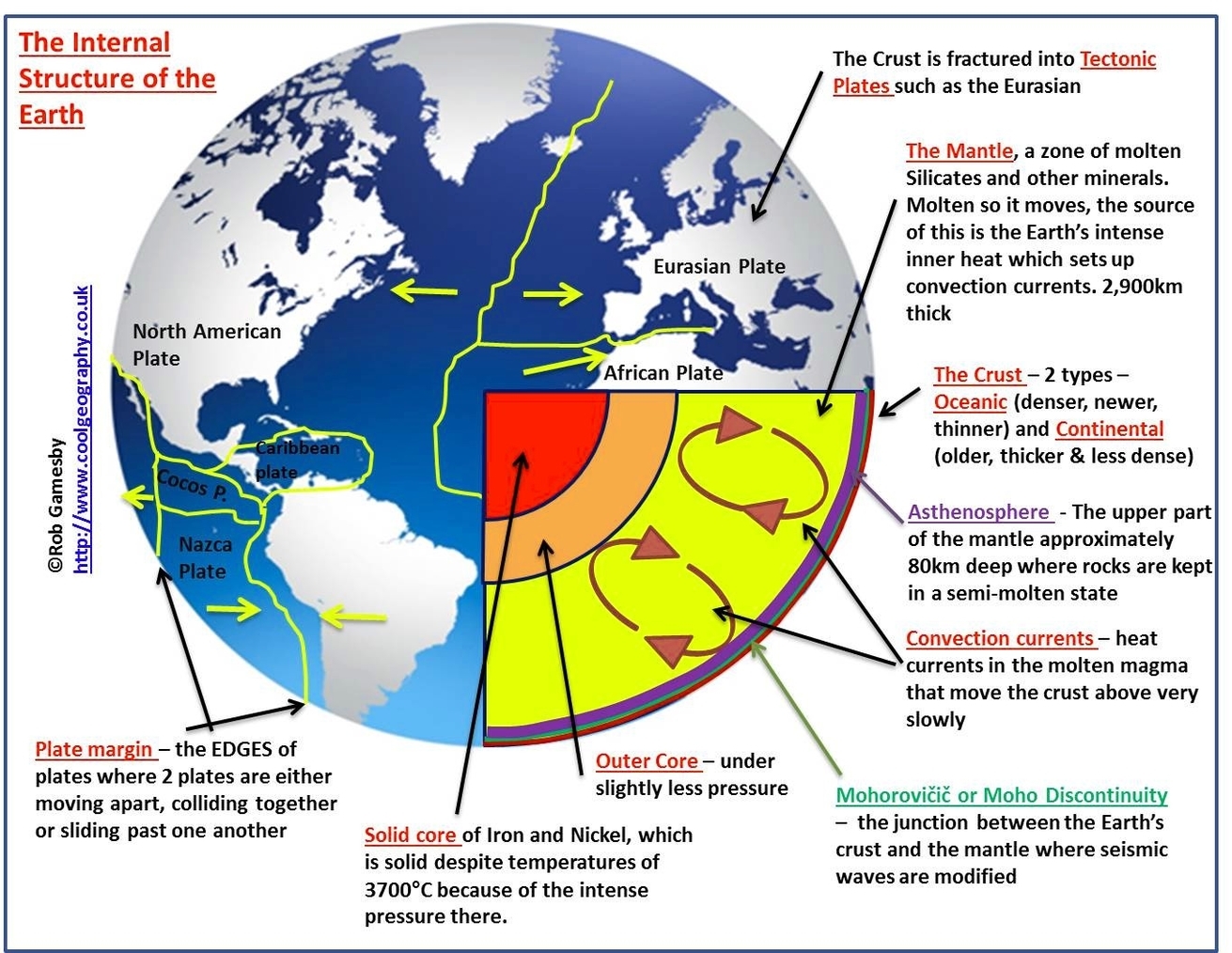
Plate tectonics is the scientific theory that explains how the Earth’s surface is shaped by the movement of large pieces of the crust and upper mantle, called tectonic plates. These plates are constantly moving due to the heat and pressure in the Earth’s interior, creating different types of boundaries where they interact. Here is a brief overview of plate tectonics in about 1000 words:
The Earth’s outer layer, or lithosphere, is divided into seven major and several minor tectonic plates. These plates are composed of either oceanic or continental crust, which are both made of different types of rocks. Oceanic crust is thinner, denser, and younger than continental crust, which is thicker, lighter, and older. The plates rest on a softer layer of the mantle, called the asthenosphere, which can flow like a thick liquid. The asthenosphere is heated by the core, which is the innermost layer of the Earth, and consists of a solid inner core and a liquid outer core.
The heat from the core causes convection currents in the asthenosphere, which are circular movements of hot and cold material. These currents drag the plates along, causing them to move at different speeds and directions. The average rate of plate movement is about 2 to 15 centimeters per year, but some plates can move faster or slower than others. The movement of the plates is responsible for many geological features and events on the Earth’s surface, such as mountains, volcanoes, earthquakes, and ocean basins.
There are three main types of plate boundaries, depending on how the plates move relative to each other: divergent, convergent, and transform. At divergent boundaries, plates move away from each other, creating new crust and forming rifts or ridges. This is where seafloor spreading occurs, which is the process of creating new oceanic crust at mid-ocean ridges. An example of a divergent boundary is the Mid-Atlantic Ridge, which separates the North American and Eurasian plates from the South American and African plates. At convergent boundaries, plates move towards each other, destroying or deforming crust and forming trenches or mountains. This is where subduction occurs, which is the process of one plate sliding under another and sinking into the mantle. An example of a convergent boundary is the Pacific Ring of Fire, which is a zone of volcanic and seismic activity around the Pacific Ocean, where several oceanic plates subduct
